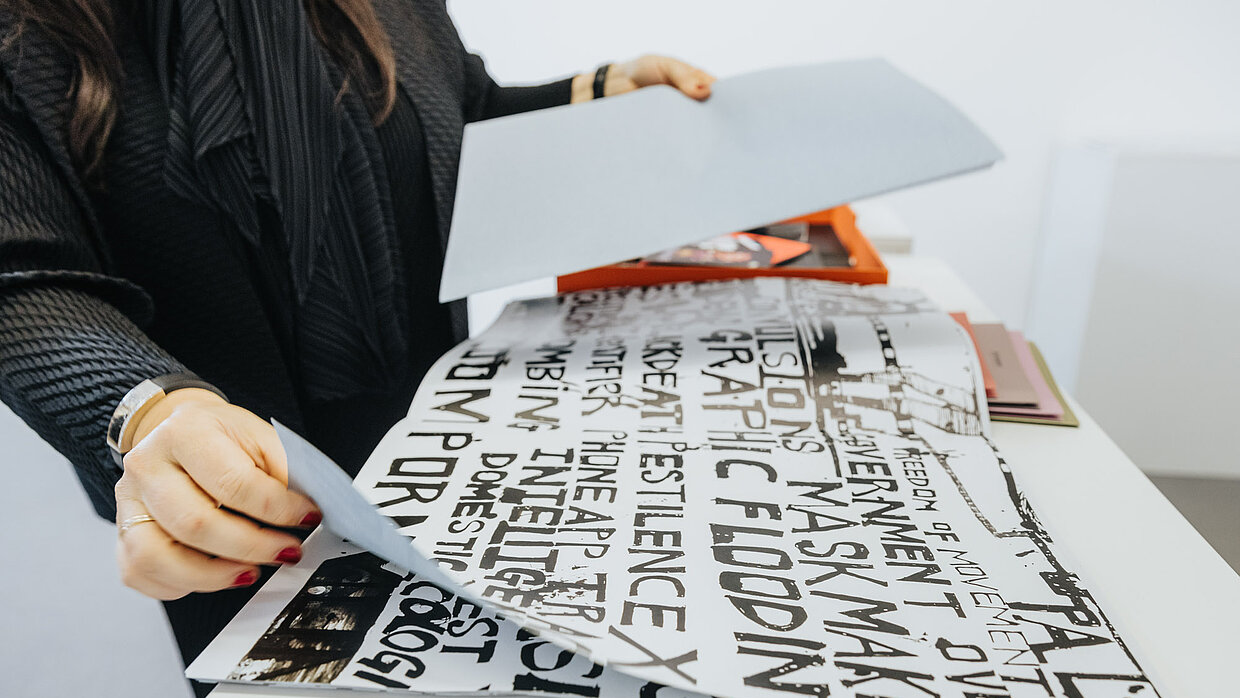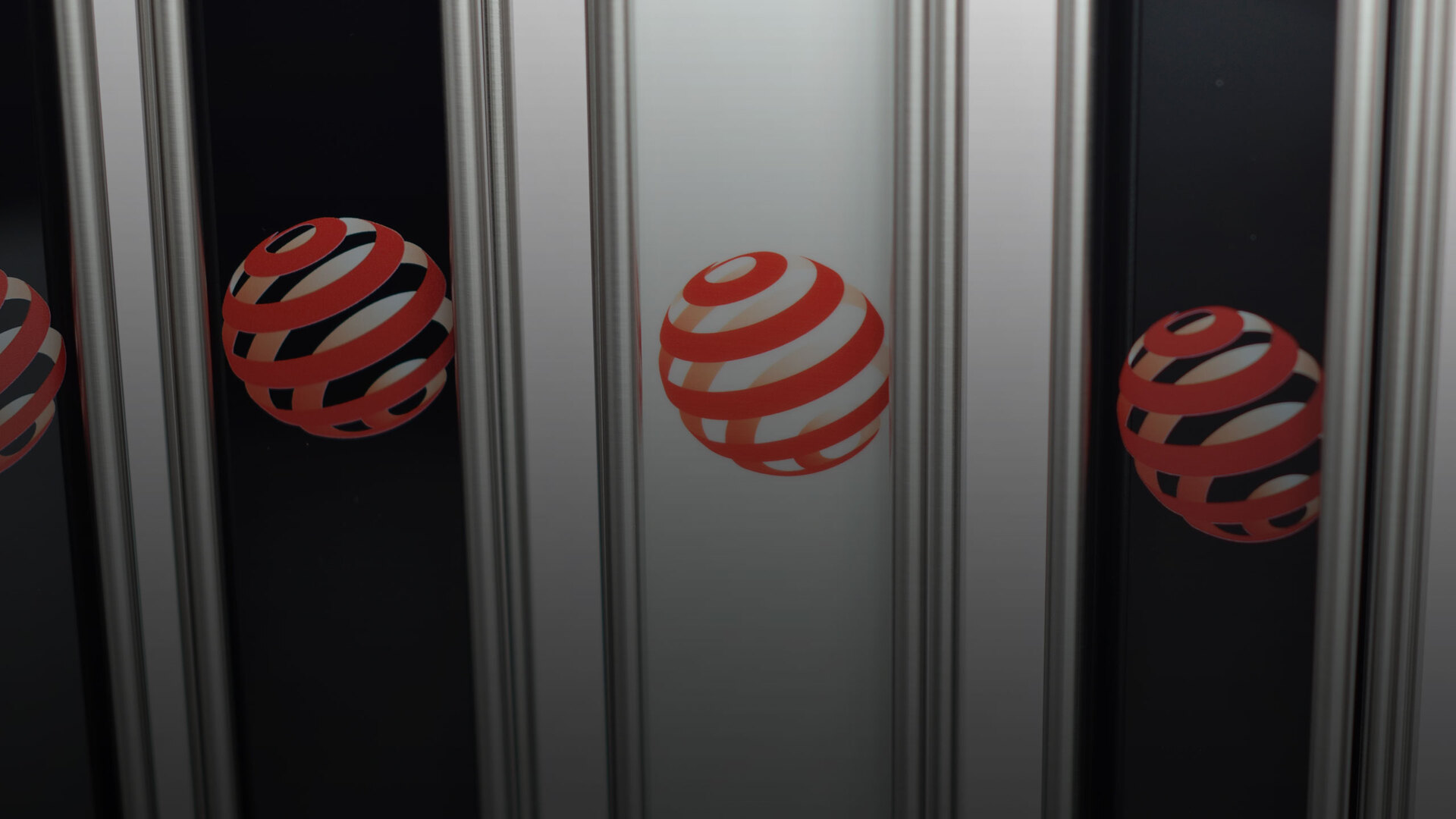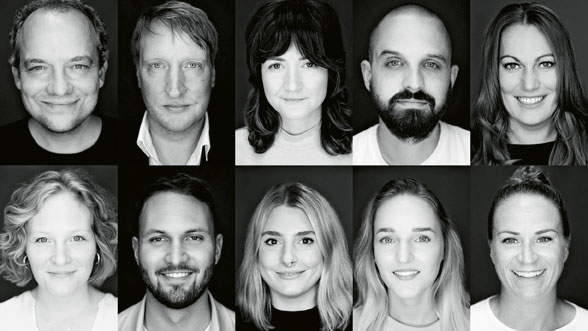
All of the jurors for the Red Dot Award: Brands & Communication Design are rich in experience and expertise. Get to know…

Discover this year’s projects and brands to win a Red Dot: Grand Prix, the Red Dot: Junior Prize and Red Dot: Brand of the Year.
In the Red Dot Award: Brands & Communication Design, the Red Dot: Best of the Best is used to recognise excellent design quality. From these projects, the jury selects some that receive the highest distinctions, namely the Red Dot: Grand Prix and the Red Dot Junior Prize. The strongest brand in an industry is awarded the title of Red Dot: Brand of the Year.
From packaging to posters and websites, take a look at the winners of the top distinctions:
Client:
Hermann Vaske’s Emotional Network
Frankfurt/Main, Germany
Design:
denkwerk
Cologne, Germany
denkwerk helps businesses use the opportunities of digital change to make a meaningful difference in people’s lives. It is a consulting and digital agency hybrid with three simple principles: being passionate about solving problems and rethinking the status quo; putting people front and centre to create relevant products and experiences; working in agile, autonomous teams to deliver better results faster. As a strategic partner, denkwerk helps businesses transform and grow and creates brands and solves problems in a future-forward way for Deutsche Telekom, fraenk, ESPRIT, Motel One, OTTO, Santander Bank and many others.
Where do you see future challenges in communication design?
Design has to reconcile an increasing number of disciplines and technologies. In interface design, we regularly have to decide between acquired usability and new ideas.
To what extent do you think new technologies are changing design?
We don’t think that design itself will change. For us, it always means “form follows function”. That’s a universal rule. We believe it’s more likely that designers will have to adapt to new technologies.
Why did you become a designer?
We want to shape and improve the world around us. You can do that either as a scientist… or as a designer!
What does a communication designer need to be successful?
Hard work, hard work and even more hard work!
Client:
BMW Group MINI
Dubai, United Arab Emirates
Design:
Serviceplan Germany
Munich, Germany
Serviceplan is one of the biggest owner-managed advertising agencies in Europe. With its “Houses of Communication” spread all across the globe, Serviceplan’s unifying goal is to create the best brands. To reach that goal, the group uses “Übercreativity”, a higher form of innovation that happens when diverse disciplines, cultures, talents, technologies and media collaborate and interplay.
To what extent do you think new technologies are changingdesign?
Technology will always change design by creating new means of expression, depending on the purpose and use: from art to interfaces or new ways of communicating a service or product. Technology will become more complex, so only design can make it more approachable, inclusive, easy to access and understandable, so we can all benefit from it.
What are the biggest challenges in a creative’s everyday life?
To stay relevant. This means being on the front line of finding the correct answers from a different perspective. Nowadays, you have to be fast, learn, adapt and make sure your work is authentic.
Client:
Klim Type Foundry
Wellington, New Zealand
Design:
Klim Type Foundry
Wellington, New Zealand
Klim Type Foundry was founded by Kris Sowersby in 2005 and is based in Wellington (Te Whanganui-a-Tara), New Zeeland (Aotearoa). Its foundational ethos is “a thing well made”. Klim’s typefaces combine historical knowledge with rigorous contemporary craft and are used by international brands, institutions and businesses of all sizes. The studio has designed custom fonts for such international clients as The Financial Times, PayPal and National Geographic. They are also included in Apple’s operating system.
How would you define good communication design?
Meaningful and appropriate, something that works within the current cultural climate. Something that gives more than it takes.
Where do you see future challenges in communication design?
I am not very good at predictions, but I assume the same as they’ve always been: time, money, clients and audience.
Why did you become a designer?
Becoming an artist wasn’t a viable career choice.
How do you remain creative and continue to come up with innovative solutions?
I don’t think my work is particularly creative or innovative. Typeface design is a long, slow discipline with incremental changes.
What does it take to be successful as a communication designer?
I am not entirely sure!
Client:
Bryansk Dairy Plant OJSC
Brjansk, Russia
Design:
Depot branding agency
Moscow, Russia
Depot is a branding agency that creates brands from scratch and also breathes new life into existing ones. Its expertise includes market analysis, integrated brand communications, brand strategy and positioning, naming, visual identity and packaging design for local and global markets. The team of top specialists is supported by a global local branding alliance and a number of Russian branding associations. For 20 years now, the agency has been committed to maintaining its award-winning standard of quality, striving to create outstanding design solutions with a striking visual language.
How would you define good communication design?
The essential task of communication design is to reveal and develop the ideas that have the potential to change the way people live today.
How do you remain creative and continue to come up with innovative solutions?
Collaborative working and open communication are some of the ways for creating modern and innovative ideas. There are some basic principles which are powerfully integrated in our everyday work: we hold internal workshops where art directors, copywriters and designers can share ideas and feed into each other’s projects; we never stop learning and honing the skills of every team member; we live with our eyes wide open to the random beauty of the changing world.

Client:
Frauen aufs Podium e. V.
Potsdam, Germany
Design:
+KNAUSS GmbH
Hamburg, Germany
Die Stube
Hamburg, Germany
+KNAUSS is an owner-managed, independent strategic and award-winning creative agency with a focus on brand building for large companies. Founded in 2013 with offices in Hamburg and Munich, it has a reputation as the “smallest big agency in the world”.
Where do you see future challenges in communication design?
For +KNAUSS it’s crucial not only to forge a new path of collaboration between trend researchers, R&D and designers, but also between different agencies. Because: tomorrow’s winners do not emerge from the silos of yesterday.
Why did you become a designer?
Communication design shapes world views. It’s about participating in the storytelling of the zeitgeist and promoting brands and organisations with attitude.
How do you remain creative and continue to come up with innovative solutions?
Keep moving and questioning. Fight for the freedom that makes change possible. Be demanding, convinced and convincing. Have the courage to take responsibility – to do the uncopiable.
What does a communication designer need to be successful?
The ability to fail cheerfully.
Client:
Nanji E-Commerce Co., Ltd.
Shanghai, China
Design:
Shenzhen Firstdot Design Consulting Co., Ltd.
Shenzhen, China
Nanji E-Commerce Co., Ltd.
Shanghai, China
The members of the design team at Nanji E-Commerce Co., Ltd. have worked in well-known domestic design companies and have more than ten years of work experience. Their work pursues the sense of volume and tension of point, line and colour, and endows products with simplicity and vitality.
To what extent do you think new technologies are changing design?
They further liberate designers’ ideas and creativity. At the same time, they challenge designers’ core competence. They introduce brand-new design scenes and change design forms.
Why did you become a designer?
We love things of beauty and hope to break the mould.
How do you remain creative and continue to come up with innovative solutions?
We treat every project with ingenuity – not only in our ability but also our attitudes. Deeply aware that communication matters most, we keep communicating with clients, colleagues and peer designers.
What was your intention in designing your awarded work?
We appeal to young people to focus more on Chinese culture in case traditional festivals are buried by the times.
What does it take to be successful as a communication designer?
Acute insight, profound knowledge and experience, and high-level sensitivity.
Client:
Jumping He
Berlin, Germany
Design:
Jumping He
Berlin, Germany
hesign International
Hangzhou, China
Jumping He, born in 1973 in China and now living in Berlin, works as a graphic designer and publisher. He studied graphic design at the China Academy of Art, the Berlin University of the Arts (1997–2001) and gained his PhD in cultural history at the Free University of Berlin in 2011. He has taught at Berlin University of the Arts, China Academy of Art, The Hong Kong Polytechnic University, etc. His works have been globally awarded, e.g. at International Poster Biennial in Warsaw, German Design Award, Joseph Binder Award, Red Dot Design Award or D&AD Awards, and displayed in solo exhi bitions, e.g. in Nanjing / China, Hong Kong, Germany, Japan, Slovenia, Poland, Iran, Malaysia, etc. In 2021, his book “daydream” was published and his “daydream” exhibition held at the V&A Museum in Shenzhen, China. Jumping He is a member of the Alliance Graphique Internationale (AGI).
How would you define good communication design?
I would like to talk about my own understanding of good design. For many years, I have insisted on the concept of “Originality, Revolutionary, Timeless”. “Originality” refers to the originality of the design concept and expression. “Revolutionary” refers to boldness – the courage to break conventions, to think for oneself and to do away with cliches – of course with a firm grounding in history, theory, the classics and the achievements of one’s forebears. “Timeless” refers to the power of aesthetics. When aesthetics exists at the same time as the conveyance of information, one’s design breaks the boundaries of time, and it becomes eternal.
Why did you become a designer?
Perhaps because of my personality to love the new and loathe the old.
Client:
Guangzhou Academy of Fine Arts
Guangzhou, China
Design:
Tian Bo
Guangzhou, China
Tian Bo, art director and graphic designer, received his PhD in design from China Academy of Art in 2019. He is the founder of the TEN BUTTONS design studio, a member of SGDA, and he teaches at Guangzhou Academy of Fine Arts. For his work he has been widely honoured, including at the Tokyo TDC Annual Awards, Award360° Design Award, ADC 100th Annual Awards, 67th TDC Communication Design Competition, Golden Pin Design Award, Red Dot Design Award, iF Design Award, Hiiibrand Awards, GDC, Macau Design Biennial, CCII International Logo Biennial, etc. Selected works have been showcased at the International Poster Biennale in Warsaw in 2021 or at the International Poster Triennial in Toyama, etc.
How would you define good communication design?
Good communication design presents information in its most direct and purest form. Simplistic and efficient.
Where do you see future challenges in communication design?
The development of communication technology and the evolution of the screen presentation will challenge the traditional foundation of communication design.
How do you convince your customers of the merit of your designs?
To provide what I think is the newest, the most accurate visual form. I try to persuade them to understand the unique value of design through innovation.
Client:
DENTSU LIVE Inc.
Tokyo, Japan
Design:
SPREAD
Tokyo, Japan
SPREAD is a Tokyo-based creative unit founded by Haruna Yamada and Hirokazu Kobayashi. They incorporate the environment, living creatures, objects, time, history, colour, glyphs and memory into their creative work as they strive to expand (“spread”) whatever subject they take on. Characterised by its emphasis on colour and concept, SPREAD engages in creative direction and design for graphics, products and exhibitions, becoming intimately involved with each project.
What makes your daily work as a creative so special?
By engaging with society and engaging in the act of creation, we seek to change the present and create new experiences. Through experiences, we aim to foster imagination in society. Imagination has the power to save people in any circumstance. When we feel like we’re being pulled into some dark and heavy current, imagination can transport us to a better place. We are always trying to pull that trigger.
How do you convince your customers of the merit of your designs?
We do not persuade, rather we work as a team with common objectives. To go deep in a discussion is actually the essential element to achieving any goals.
What does a communication designer need to be successful?
To listen to others carefully and to extend one’s own research. Also, to pay attention to the connections between the things left unexplored.
Company:
Minna Bank
Founding Year:
2019
Headquarters:
Fukuoka, Japan
Lead Agency:
Fjord Tokyo (Accenture Interactive)
Tokyo, Japan
Company Founder:
Koji Yokota
Minna Bank is a Japanese digital banking service created for digital natives. Leveraging the power of design, the design team has redefined traditional banking as a digital service that is essential to the customers’ lives. The simple black-and-white user interface, with iconic illustrations by Hiroaki Seto, creates a unique brand identity influenced by digital native culture that stands out against competitors.
How would you define good communication design?
We believe quality communication design conveys messages clearly and inspires emotions in people.
Why did you become a designer?
Because we love to design!
What makes your daily work as a creative so special?
Communication with many different people from diverse departments as a source of inspiration is something very special to us.
What was your intention in designing your awarded work?
We have a strong belief in designing a new style of banking that people have never seen before and will fall in love with.
What does it take to be successful as a communication designer?
Empowering and inspiring people, and creating real results reflected in business performance.
University:
Chaoyang University of Technology
Taichung, Taiwan
Design:
Yu-Tsen Chang, Lu-Xi Jiang, Bo-Xian Chen, Cheng-Han Chuang,
Chaoyang University of Technology
Taichung, Taiwan
Yu Tsen Chang, Lu Xi Jiang, Bo Xian Chen and Cheng Han Chuang are students from the Department of Visual Communication Design at Chaoyang University of Technology, Taiwan. Yu Tsen Chang, the leader of the project, was responsible for the layout design and illustration, Lu Xi Jiang took care of the brand planning and illustration, Bo Xian Chen handled the manual layout, planning and programming while Cheng Han Chuang looked after the image editing and packaging structure design.
What aims do you have for your future career?
We hope to engage in design-related industries, set up studios with like-minded partners and have a brand of our own.
What does winning the award mean to you?
We are undoubtedly excited. Through our projects, both the public and professionals can understand the meaning and design concepts we want to convey, which is affirmation and inspiration for us and gives us more confidence.
How do you convince your customers of the merit of your concepts?
Beginning with a story can gain the customers’ attention, so we think it’s important that a designer is good at storytelling. Before starting a design project, reading relevant information and data and planning the content of each design stage, demonstrates your professionalism to customers. The most important thing is to have enough confidence in your work.